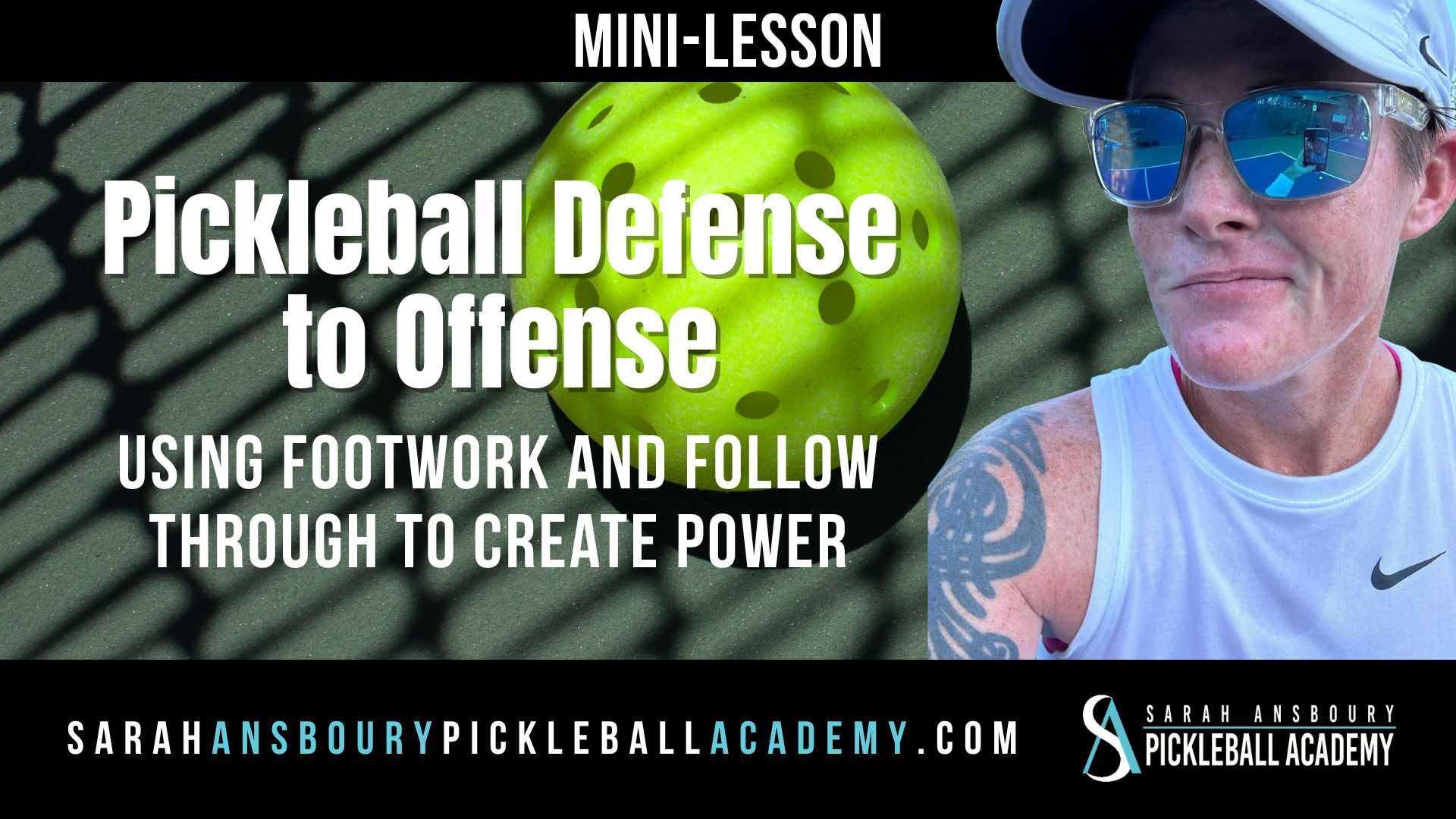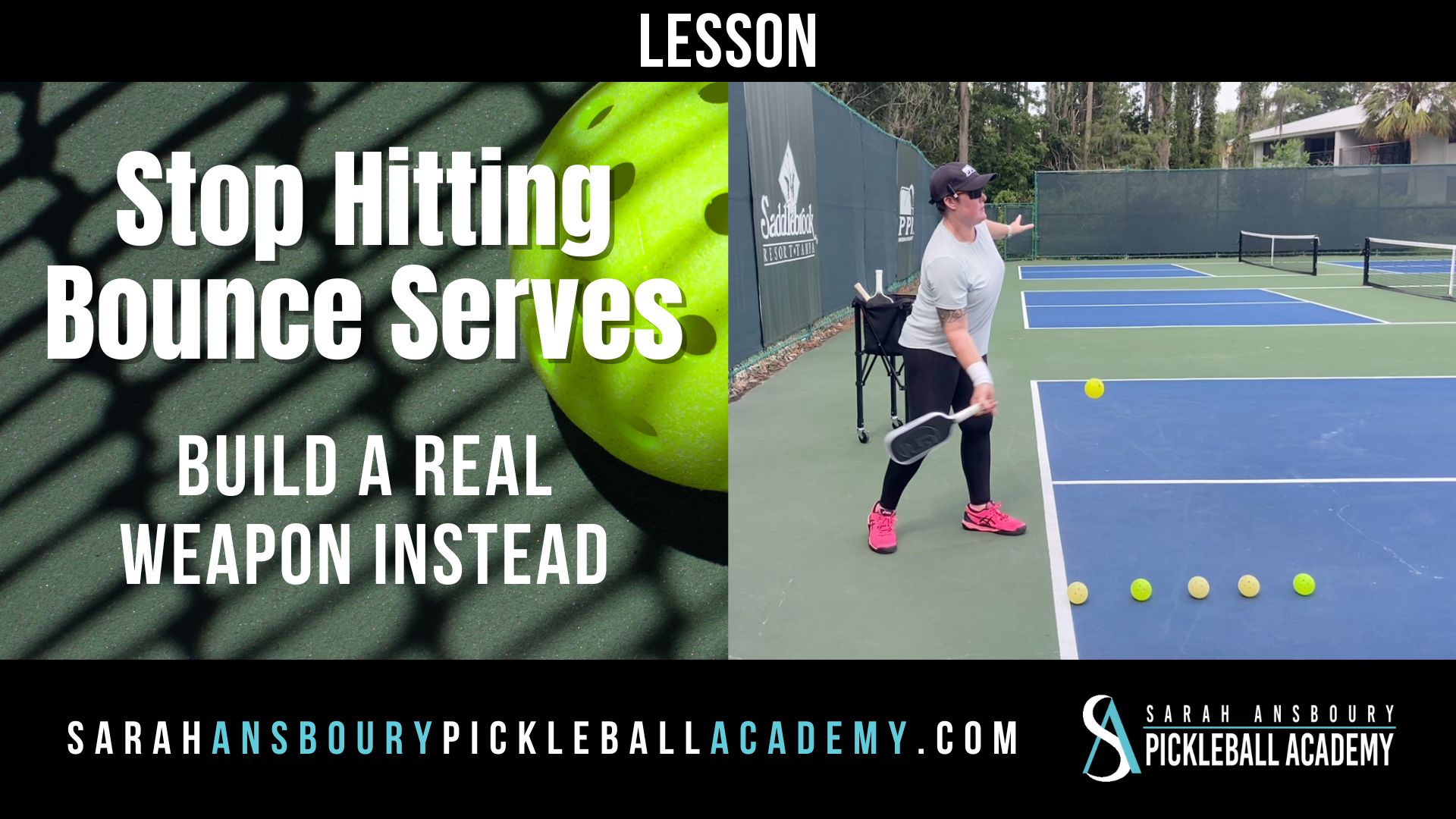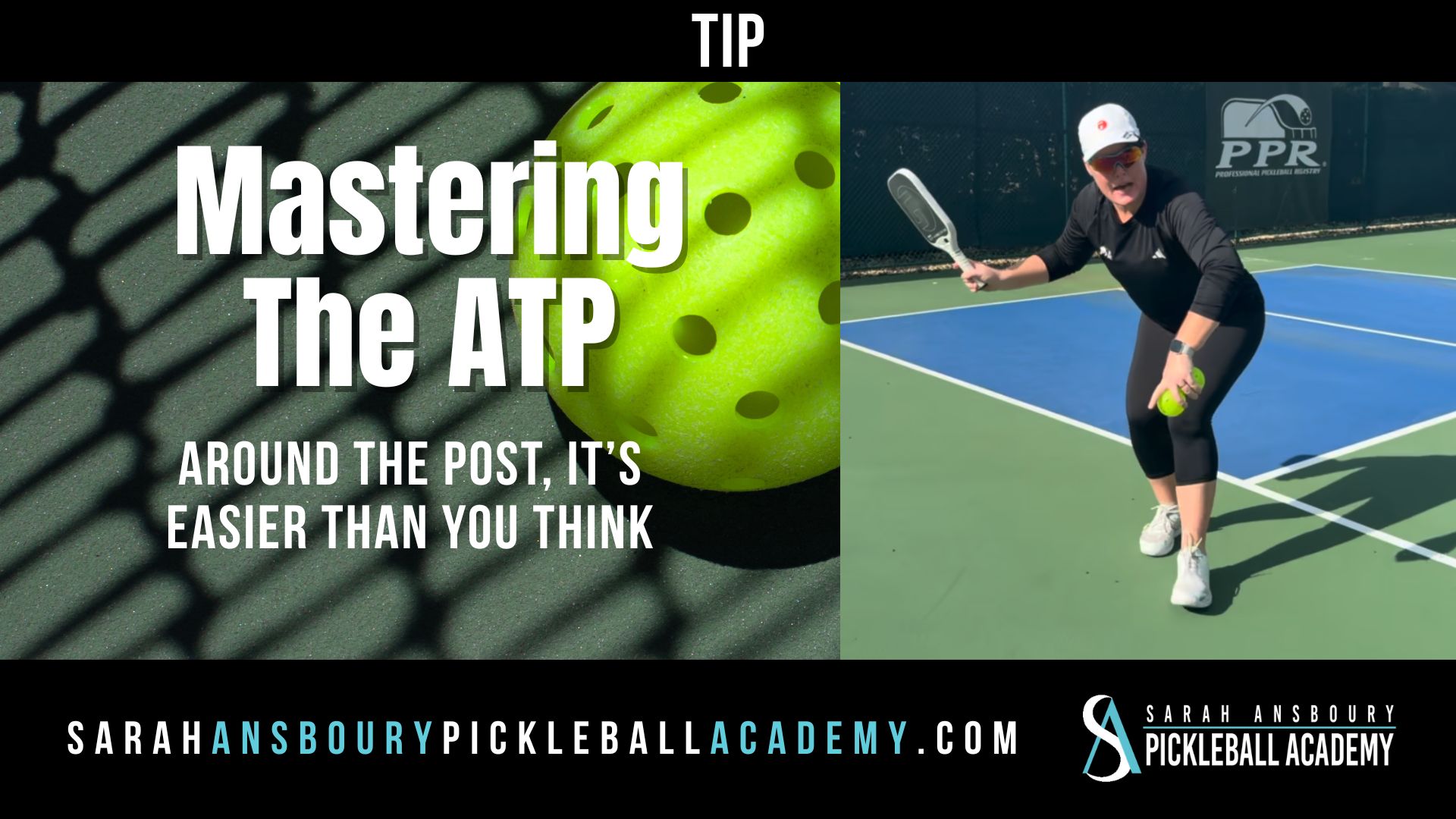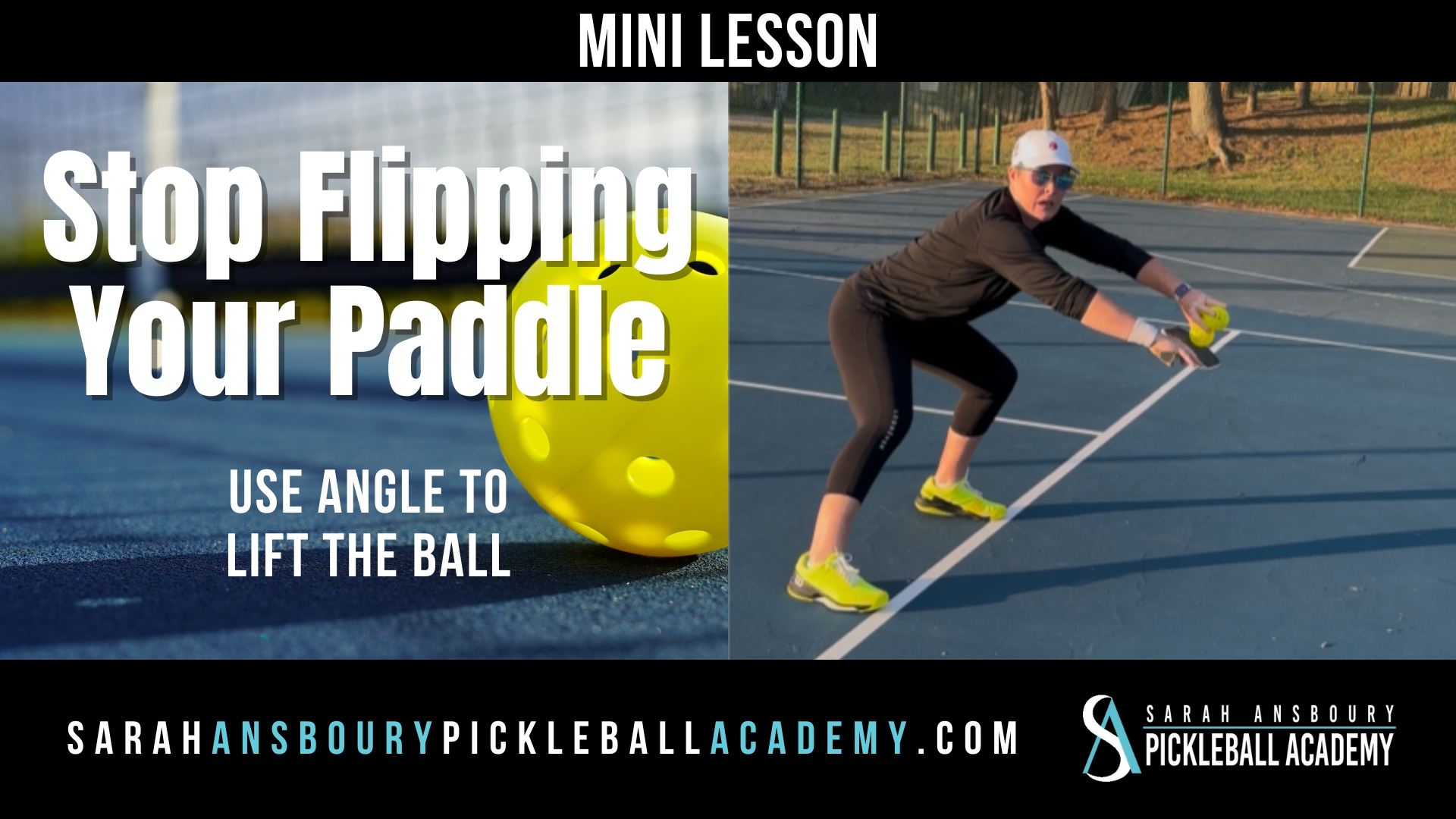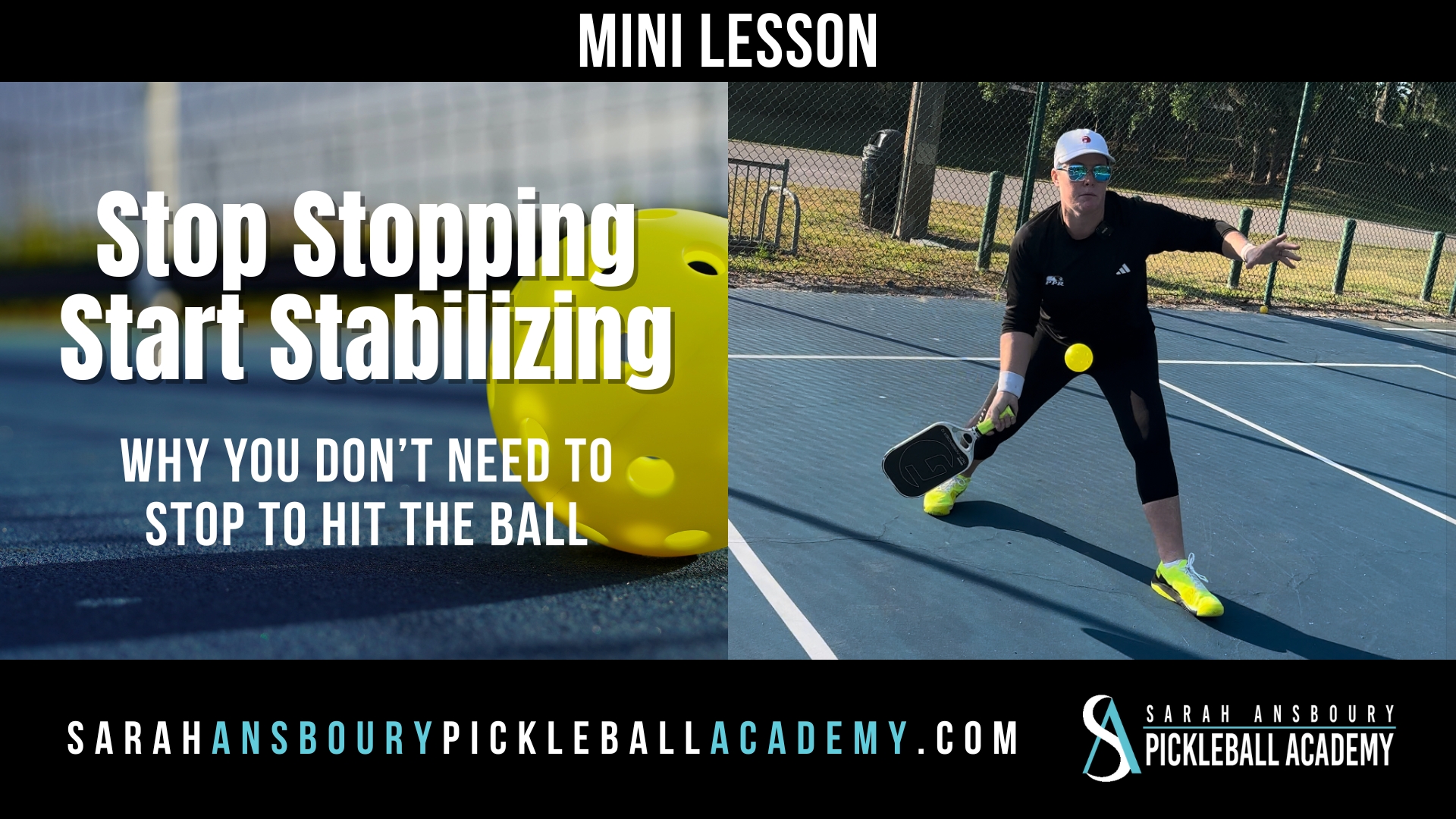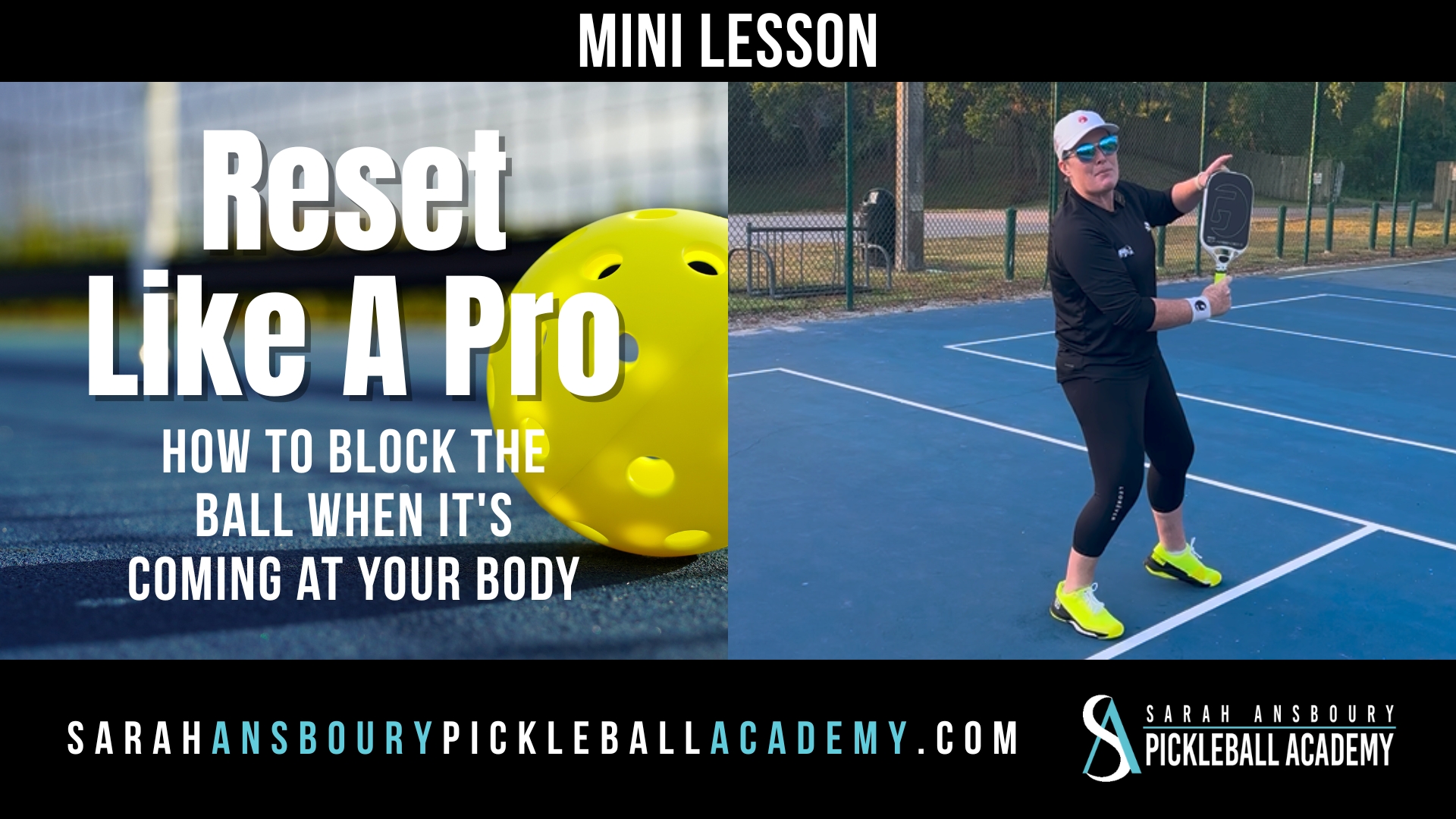One of the things I realized early on is our serve is an extension of our entire game. You see there are three keys to a winning serve and these apply to every shot you hit.
ace vs. winning serve
When serving, we are not looking for an ace. In fact, in my experience, those players that focus on serving an ace lose the point more often than they succeed. Instead, we are looking to create a weak return from our opponent. By hitting a deep serve, we improve the likelihood of our opponent hitting a short return. A ball that we can attack…driving it, rather than hitting a third shot drop.
While an ace is not our goal, I do want to focus on 3 things: contact point, swing speed, and weight transfer.
winning serve Key #1: Contact Point
We always want our contact point in front of us. I find a lot of players turn sideways as if they were serving in tennis. Instead, I recommend you face your target, making sure that your toes are in the direction you are serving. This will help you in three ways:
- You will be certain to make contact with the ball in front of you as you move forward;
- Your serve will be the same from both sides of the court; and
- This will enable you to more easily rotate your hips in the direction of the serve.
winning serve Key #2: Swing speed
When I swing, I want my motion to come from my shoulder…not my elbow or my wrist. By extending from my shoulder I am able to swing faster…avoiding a shorter, jerkier motion. Remember, a long, smooth motion will create quickness and acceleration. I also focus on relaxing my grip and forearm, allowing the paddle to accelerate from the tip.
winning serve Key #3: weight transfer
Perhaps the most important part of any shot you hit is allowing your weight to transfer behind the ball. We simply want to push our weight from back to the front…behind the ball. Facing forward will allow this with more ease. To check yourself, focus on your feet. At the finish of your service motion is the sole of your shoe on your back foot facing the fence behind you?
pose
 There is no rush after you make contact with the ball. Often a player will get ready too early and not finish the full-service motion. Imagine at the end of your serve someone is going to take a picture of you. Pose for the picture…allowing enough time to actually transfer your weight properly.
There is no rush after you make contact with the ball. Often a player will get ready too early and not finish the full-service motion. Imagine at the end of your serve someone is going to take a picture of you. Pose for the picture…allowing enough time to actually transfer your weight properly.While working on these three keys will make your serve stronger and more effective, the fact is the same keys apply to every shot we make. So next time you practice, think about contact point, swing speed, and weight transfer. And remember, when you are consciously working on your serve…it is okay to miss every so often. You will make mistakes…and that’s okay as long as you learn from and make the necessary adjustments.


